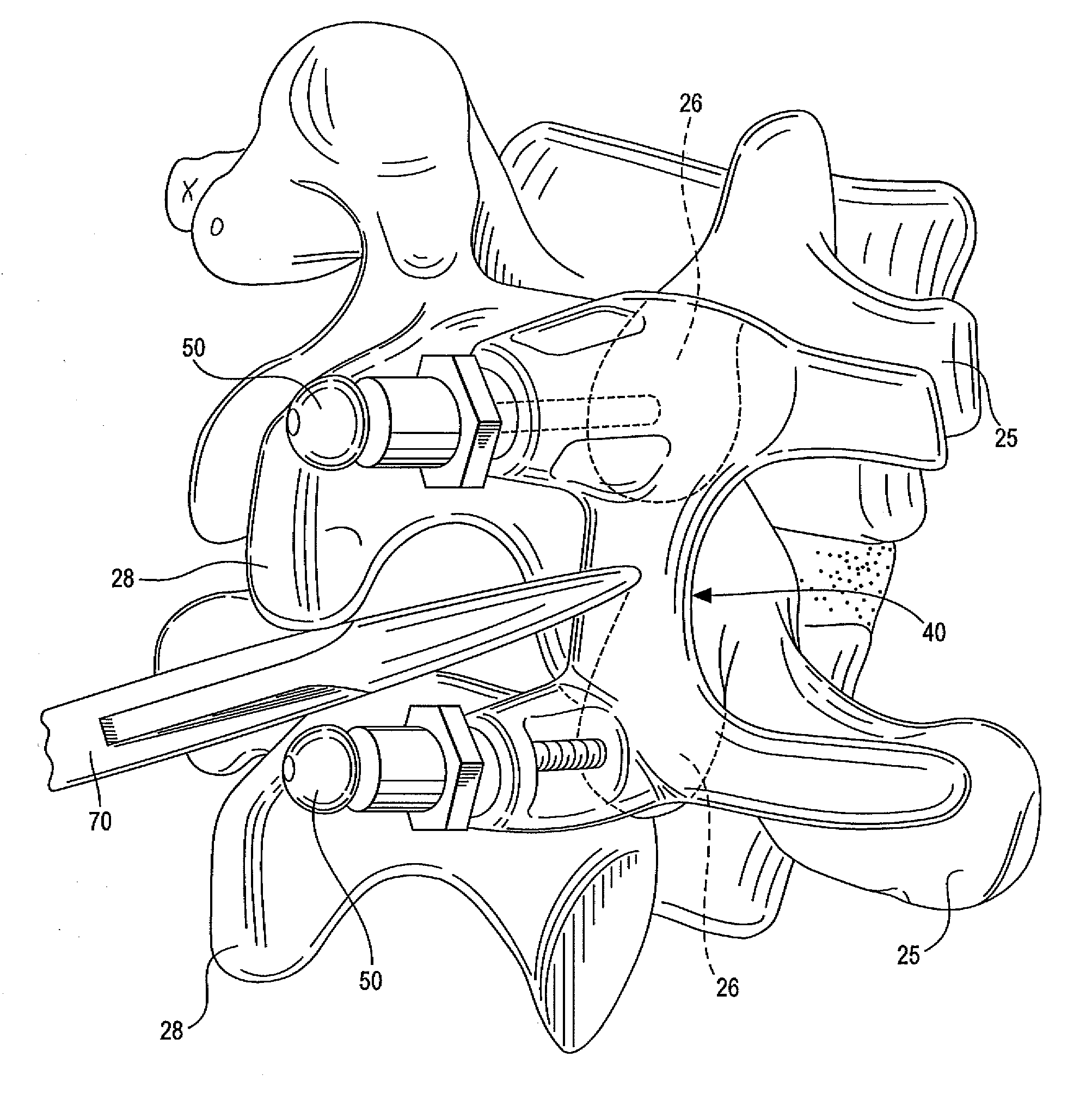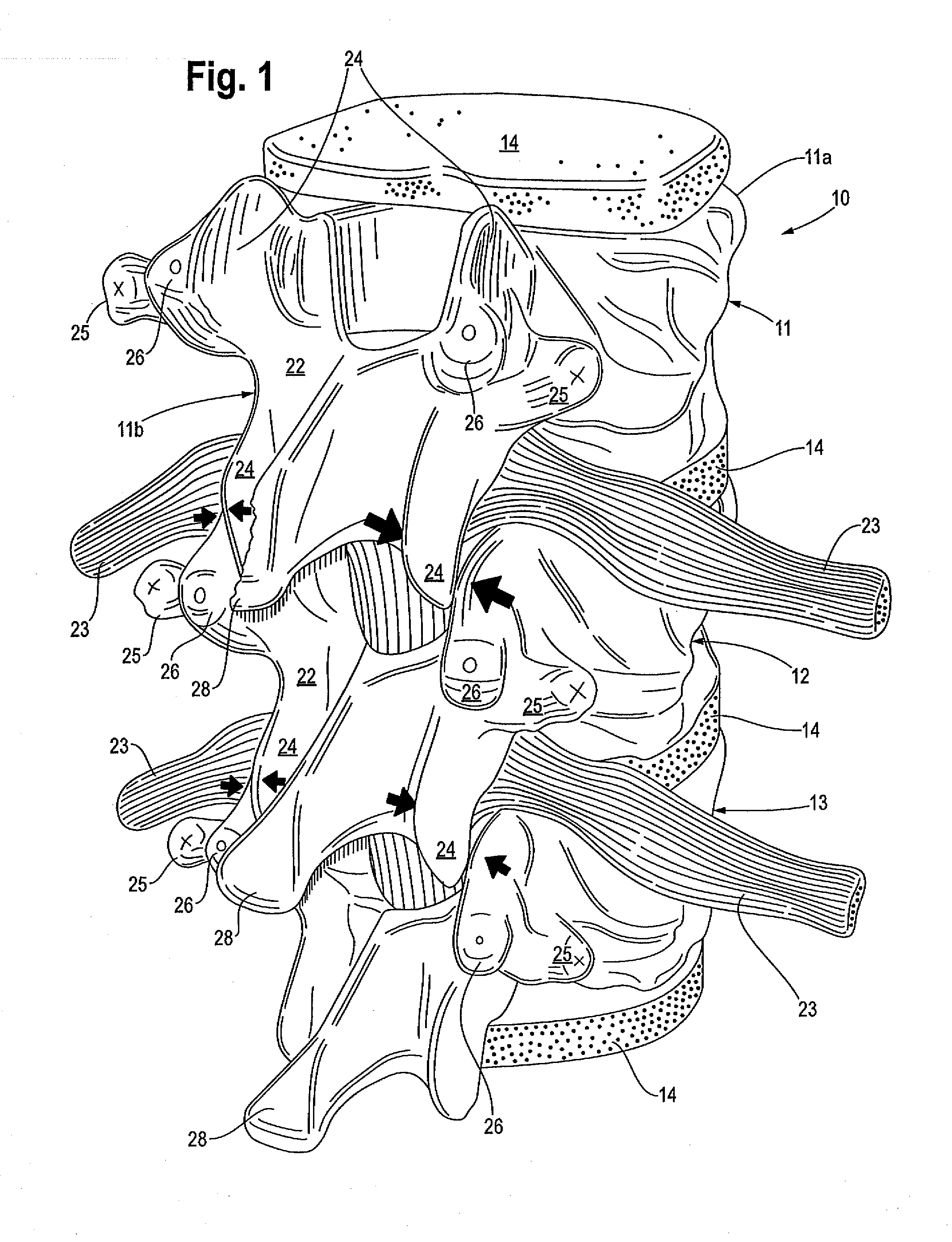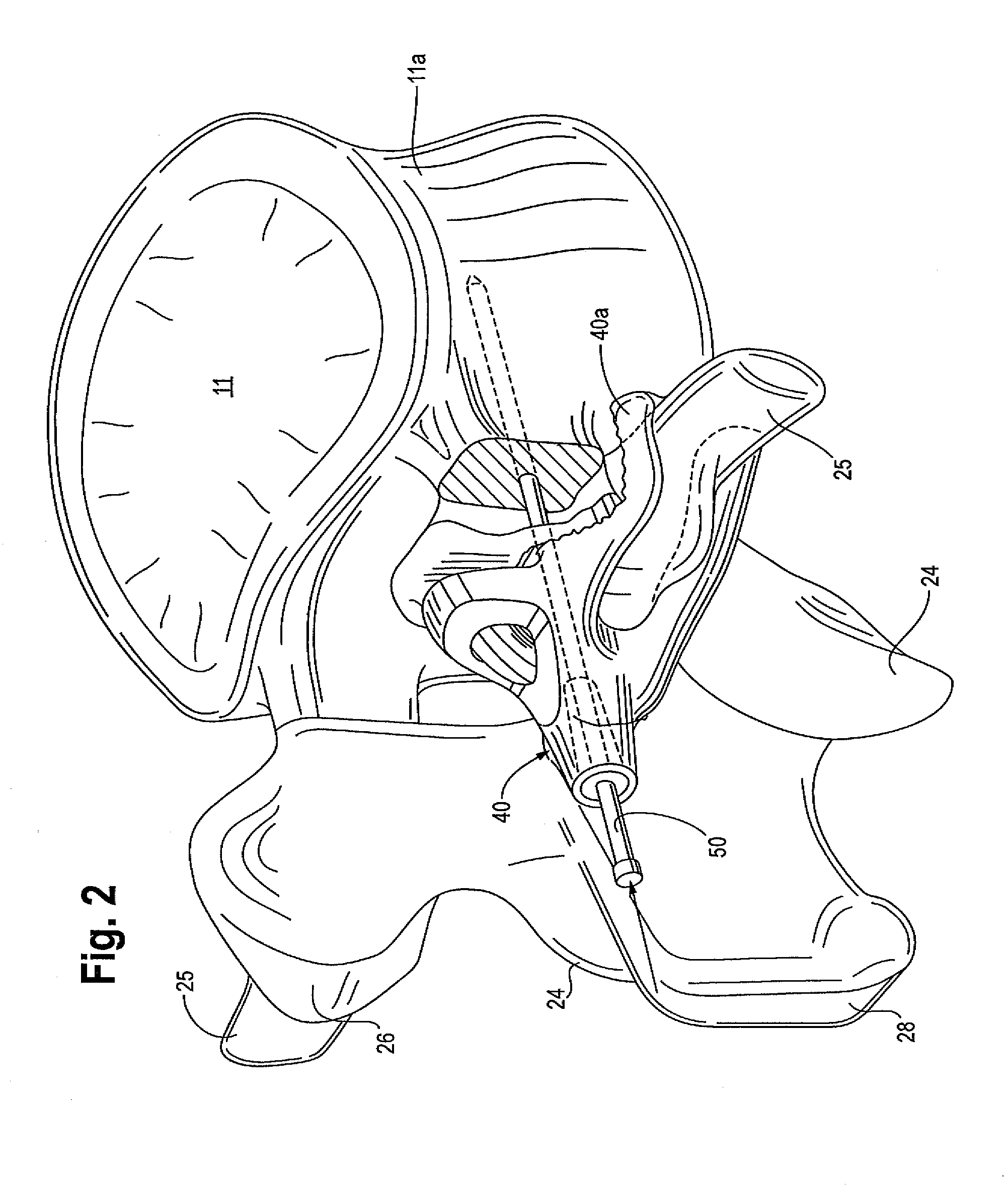Method for placing spinal implants
a technology for spinal implants and implants, applied in the field of spinal implants, can solve the problems of patient paralysis or even death, surgeon's inability to accurately align the pedicle screw, etc., and achieve the effect of avoiding unintended impingement of the devi
- Summary
- Abstract
- Description
- Claims
- Application Information
AI Technical Summary
Benefits of technology
Problems solved by technology
Method used
Image
Examples
Embodiment Construction
[0030]Set forth below is a description of what are believed to be the preferred embodiments and / or best examples of the invention claimed. Future and present alternatives and modifications to this preferred embodiment are contemplated. Any alternatives or modifications which make insubstantial changes in function, in purpose, in structure, or in result are intended to be covered by the claims of this patent.
[0031]Referring first to FIG. 1, a portion of the human spine in the lumbar region is generally designated by reference numeral 10. Spinal region 10 includes individual vertebrae 11, 12 and 13, each separated by cartilage and muscle loosely represented by reference numeral 14, and spinal nerves 23. (The spinal cord is attached to the spinal nerves and is not shown in FIG. 1. Spinal canal 30 is shown in FIG. 3.) A typical vertebrae 11 consists of an anterior (front) segment 11a, which is the vertebral body, and a posterio (back) portion 11b, which is the vertebral (neural) arch, w...
PUM
 Login to View More
Login to View More Abstract
Description
Claims
Application Information
 Login to View More
Login to View More - R&D
- Intellectual Property
- Life Sciences
- Materials
- Tech Scout
- Unparalleled Data Quality
- Higher Quality Content
- 60% Fewer Hallucinations
Browse by: Latest US Patents, China's latest patents, Technical Efficacy Thesaurus, Application Domain, Technology Topic, Popular Technical Reports.
© 2025 PatSnap. All rights reserved.Legal|Privacy policy|Modern Slavery Act Transparency Statement|Sitemap|About US| Contact US: help@patsnap.com



